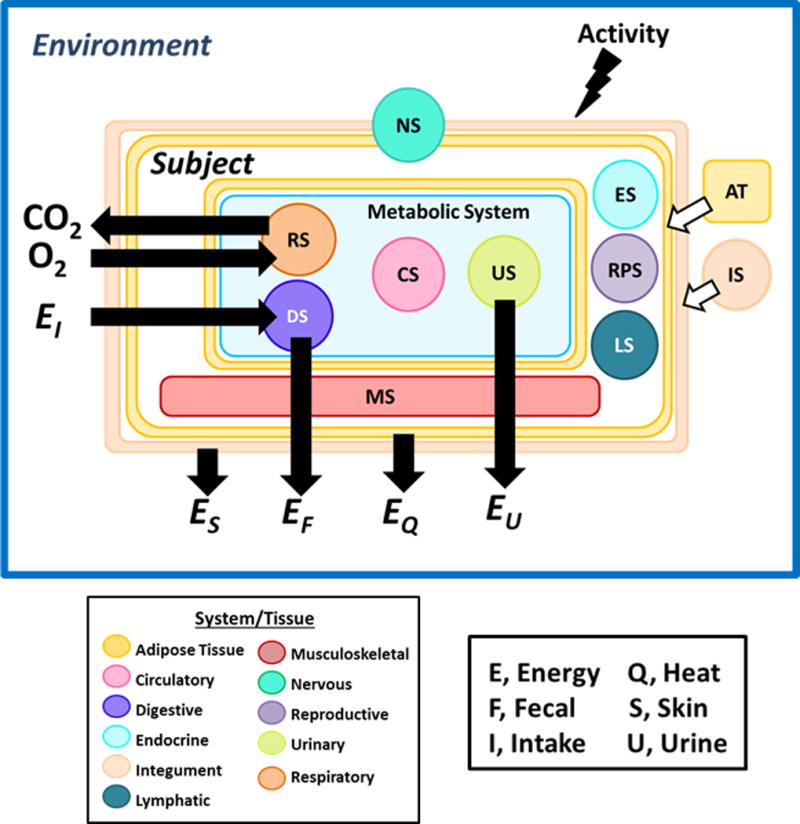Figure 1.

Organ tissue-based model of energy exchange. Four of the systems—digestive (DS), circulatory (CS), respiratory (RS), and urinary (US)—are within the visceral compartment and are directly involved in exchange of energy between the subject and environment. Adipose tissue (AT) is shown distributed in the subcutaneous compartment in association with the integumentary system (IS) and surrounding the visceral compartment organs. Heat (EQ) is exchanged with the environment via conduction, convection, radiation, and evaporation. Urinary energy losses (EU) are mainly as urea, the end-product of protein oxidation. Energy losses also arise from the skin (ES) and in feces (EF). Other systems include nervous (NS), musculoskeletal (MS), endocrine (ES), reproductive (RPS), lymphatic (LS), and integumentary. EI is energy intake.
